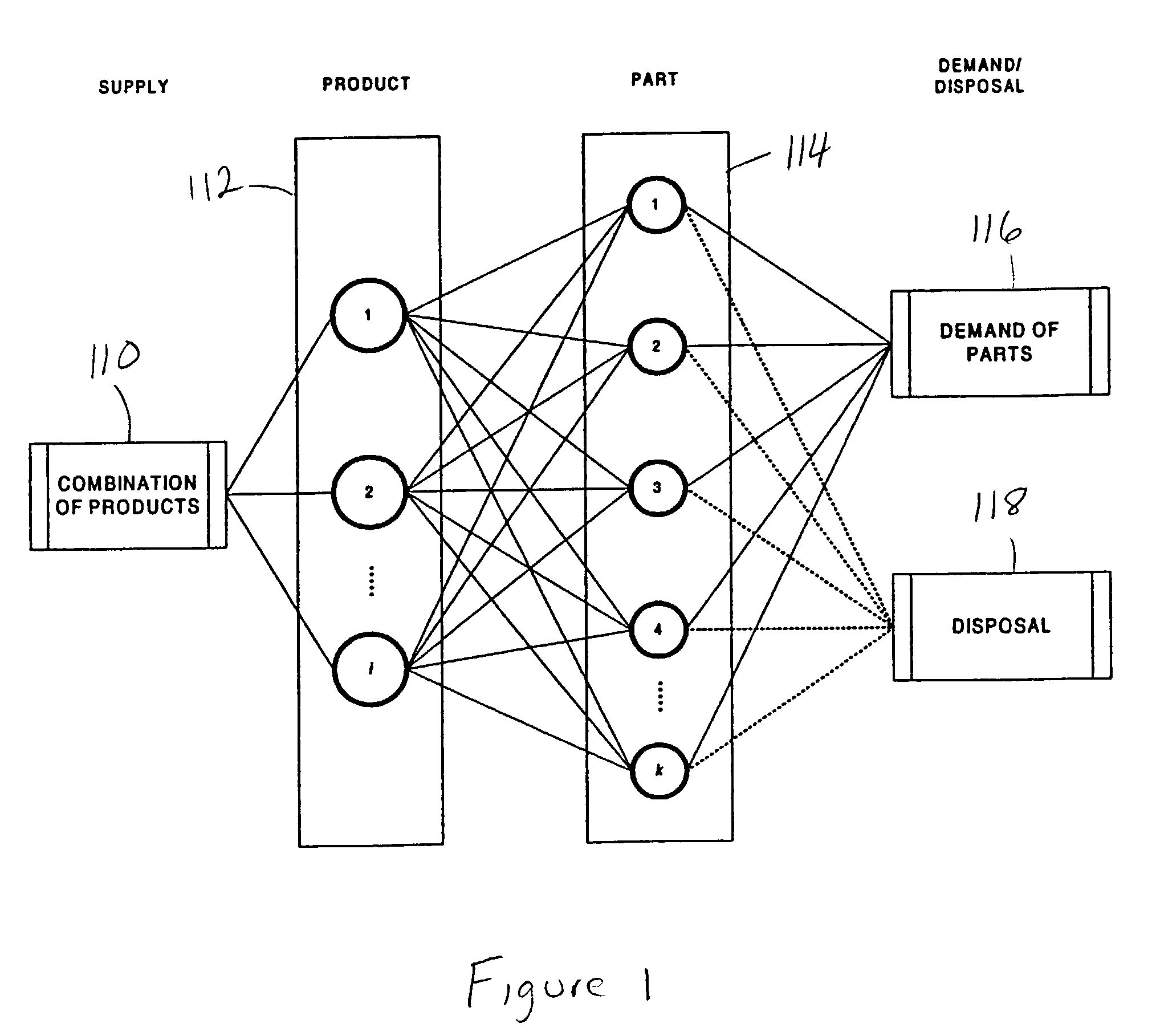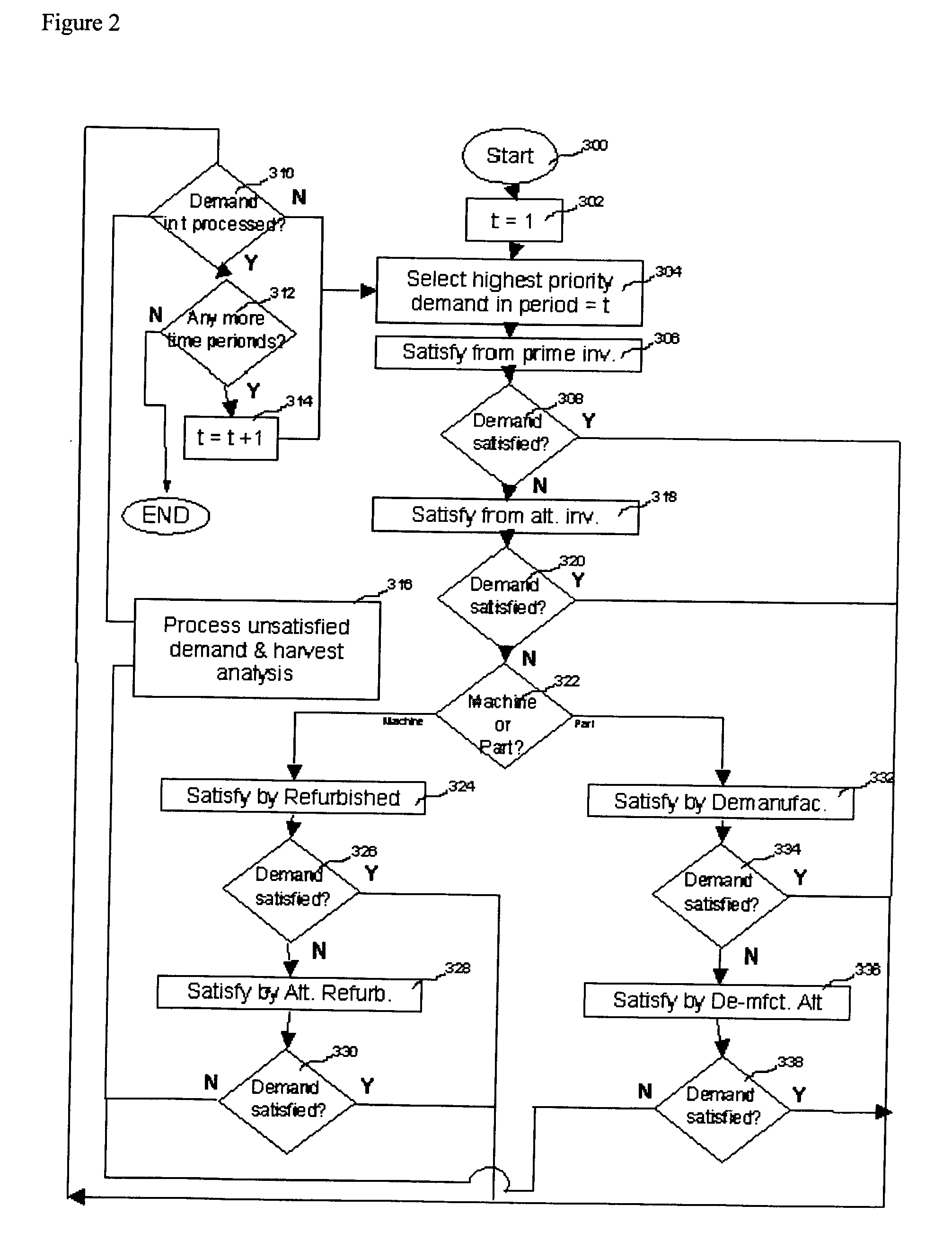Method for optimal demanufacturing planning
a technology of optimal demanufacturing and planning, applied in the field of optimal demanufacturing planning, can solve the problems of large number of used, potentially obsolete computers, and the cost of demanufacturing and refurbishing processes, and achieve the effect of potentially obsolete computers, and reducing the number of used computers
- Summary
- Abstract
- Description
- Claims
- Application Information
AI Technical Summary
Benefits of technology
Problems solved by technology
Method used
Image
Examples
Embodiment Construction
[0019] The invention maintains databases of components in inventory that are the result of the disassembly of products (machines) in the past and where all the parts were not used, inventory of products (machines) that were previously refurbished and not sold (or otherwise disposed off), inventory of products (machines) that came off a lease and were returned and have not been refurbished or disassembled.
[0020] The databases also include demand data. The invention assumes that there is some other demand planning process in place to forecast different demand streams. Each demand stream is a forecast of the demand for a particular refurbished product or reconditioned part to be sold in different ways. For example, there could be demand streams where each demand stream was the forecast for a particular product to be sold to a particular customer. There could be different customers, different sales regions, different channels, etc. The same concept of a demand stream applies to recondit...
PUM
 Login to View More
Login to View More Abstract
Description
Claims
Application Information
 Login to View More
Login to View More - R&D
- Intellectual Property
- Life Sciences
- Materials
- Tech Scout
- Unparalleled Data Quality
- Higher Quality Content
- 60% Fewer Hallucinations
Browse by: Latest US Patents, China's latest patents, Technical Efficacy Thesaurus, Application Domain, Technology Topic, Popular Technical Reports.
© 2025 PatSnap. All rights reserved.Legal|Privacy policy|Modern Slavery Act Transparency Statement|Sitemap|About US| Contact US: help@patsnap.com



